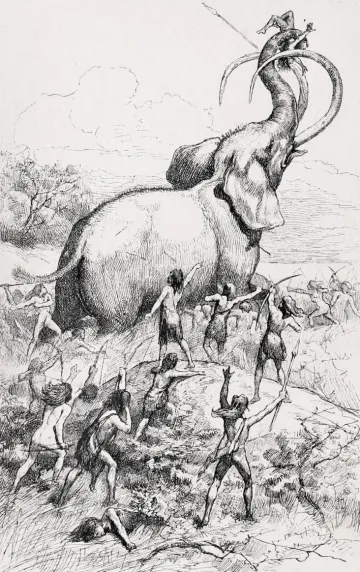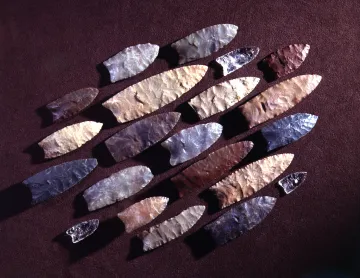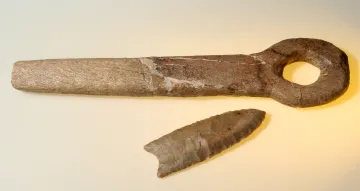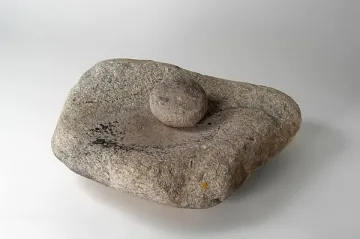PALEO-INDIAN ERA
ca. 11,000-7500 BCE (Before Common Era = BC)
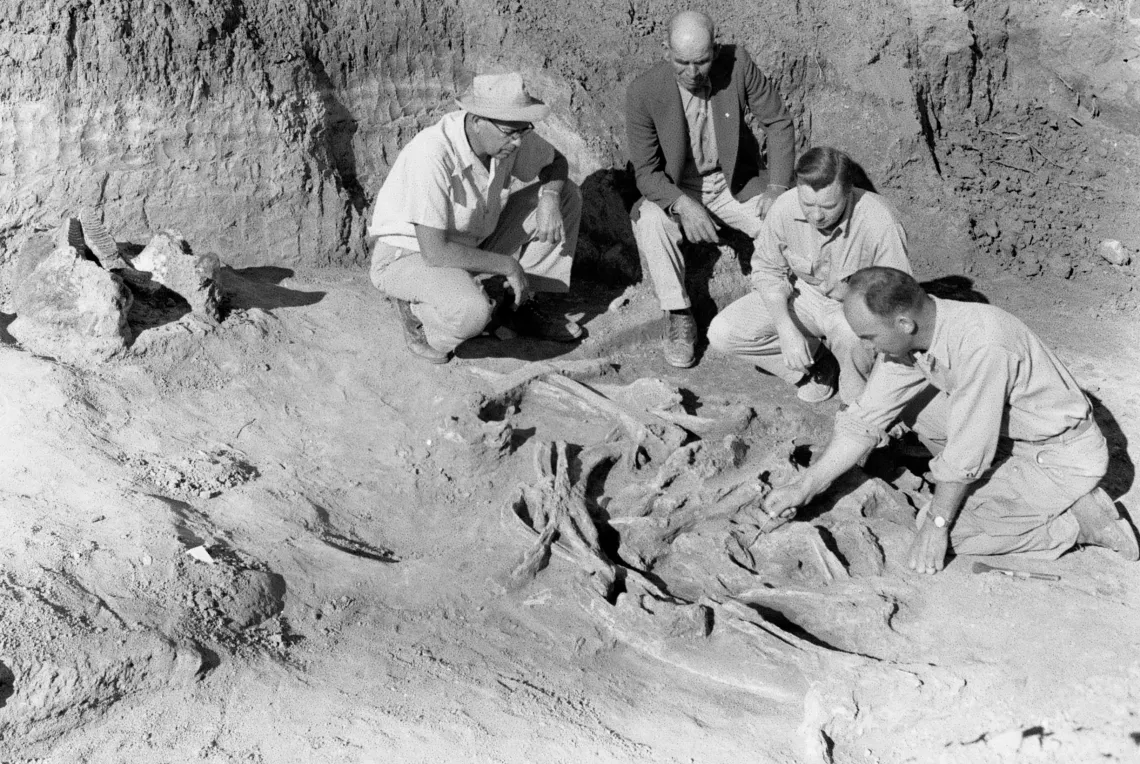
(left to right) Dr. Emil W. Haury (ASM Director and Head of UA Dept. of Anthropology) with Fred Navarrete (the man who discovered the site), Dr. John Lance (paleontologist with UA Dept. of Geosciences), and J. Cameron Greenleaf (UA archaeologist), at the Naco mammoth kill site, April 14-18, 1952. Clovis projectile points found in the rib cage of a 12,000-year-old Columbian mammoth at this ancient kill site provided the first substantial evidence of Paleo-Indian peoples in this region at the close of the last ice age.
At that time, the southern Arizona landscape was not a desert but a land of grassy slopes and tree-covered mountains. Rainfall was much greater during the Pleistocene—about 40 inches a year instead of the current 12. Greater rainfall meant a lush environment with oak, hickory, and other trees growing along permanent water courses and bogs with dense plant stands that attracted a variety of animal species, many of which are now extinct.
These nomadic populations hunted herds of animals for their food, clothing, and tool materials, large mammals such as the Columbian Mammoth, Bison, and Great Ground Sloth. Several locales where these animals were killed and butchered by early hunters have been identified in southern Arizona, particularly in the San Pedro River valley.
A distinctive style of spear point known as a Clovis Point and other stone tools used for butchering are typically associated with these “kill sites.” Among the best known of these kill sites are the Naco and Lehner Sites in the San Pedro River valley near the modern border with Mexico. Two ranchers discovered mammoth remains at Naco in 1952 and alerted archaeologists, whose excavations uncovered eight points, some embedded and others mixed among the butchered mammoth bones. The Lehner Site, located on the west side of the San Pedro River valley along Mammoth Kill Creek, showed evidence of repeated hunting episodes and a campsite where the hunters probably processed and cooked the meat. The remains of nine mammoths and horse, bison, and tapir were present in the area. Similar kill sites have not been found in the Santa Cruz River valley, although several isolated spear points have been recovered. WATCH THIS RELATED VIDEO.
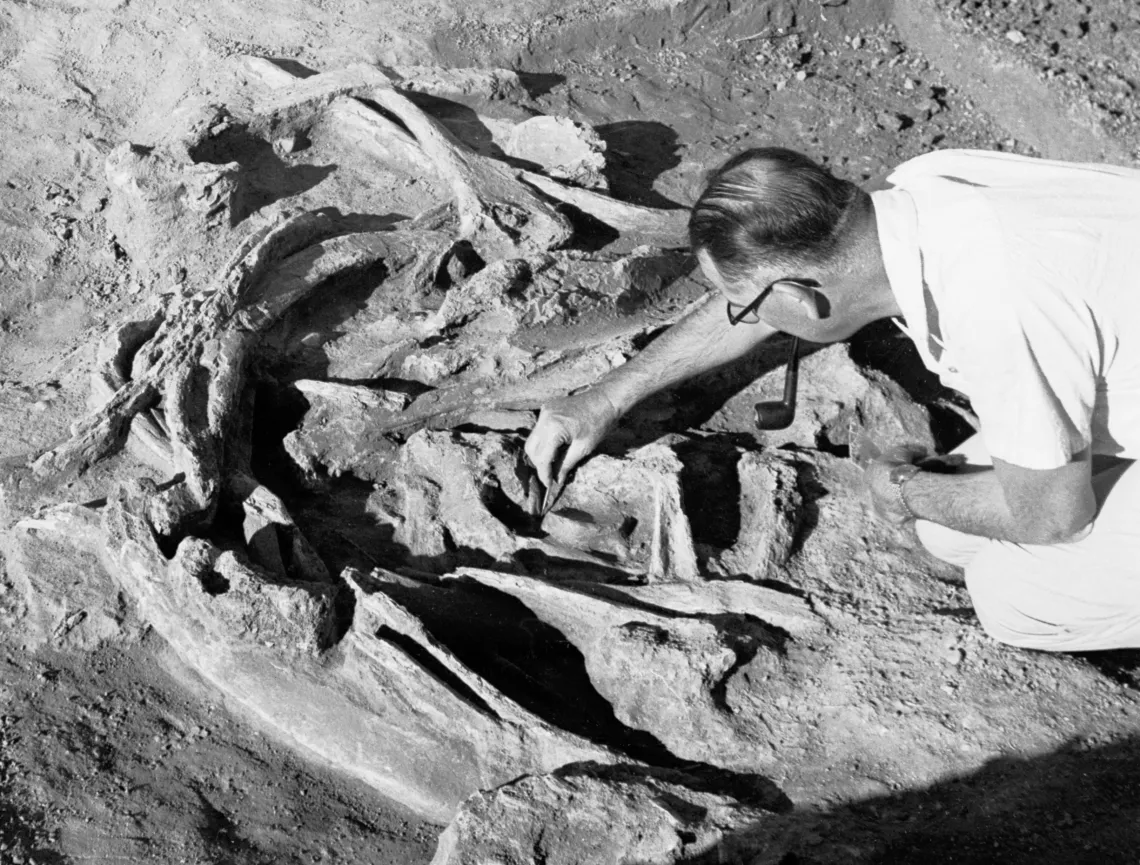
Dr. Emil Haury, then ASM Director and Head of the UA Dept. of Anthropology, articulating a mammoth rib cage with 5 embedded Clovis points. Naco Site, 1952.
Archaic Period
ca. 7500-2100 BCE (Before Common Era = BC)
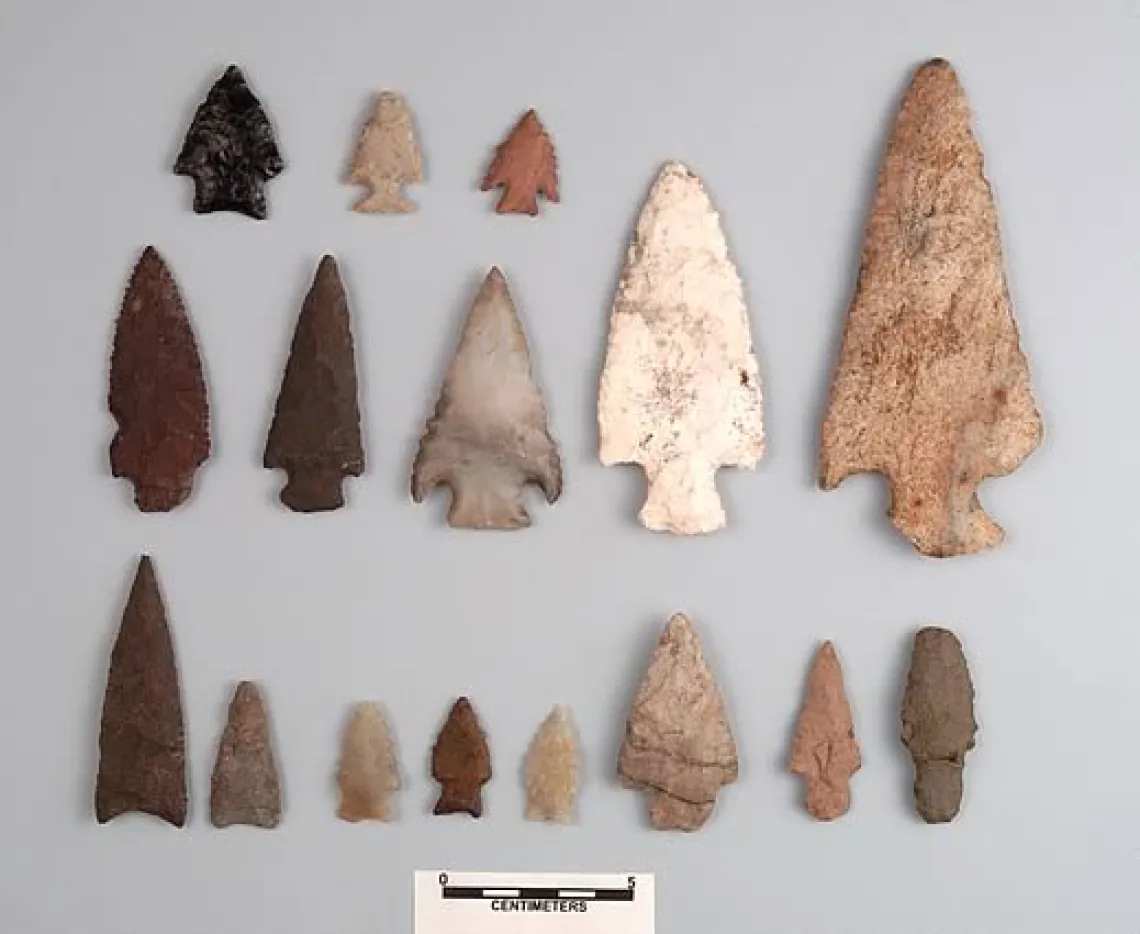
Projectile points representing several different types that were prevalent during the Middle Archaic and Early Agricultural Periods. Bottom row: two Cortaro Style points, four Pinto Basin points, a Cienega Point, and a Jay point. Middle row: variations of San Pedro points associated with the Early Agricultural Period. Top row: a possible San Pedro point and two Basketmaker side notched points.






